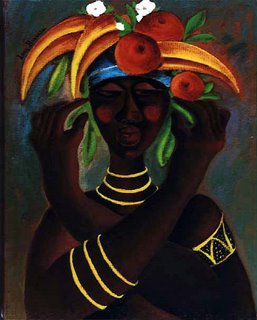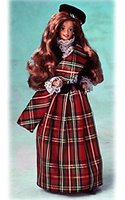Food for Thought
 Forgive me—I'm having anger management issues; that is, the post on anger I promised (Beyond the Crooked Eyebrow, 2) requires more research time before it's ready for the world. Before I dive back into Ekman's fabulous book, however, I wanted to offer a little story and maybe some food for thought.
Forgive me—I'm having anger management issues; that is, the post on anger I promised (Beyond the Crooked Eyebrow, 2) requires more research time before it's ready for the world. Before I dive back into Ekman's fabulous book, however, I wanted to offer a little story and maybe some food for thought.My family kept a wooden mug filled with pens and pencils next to our telephone when I was growing up. Problem was, none of them worked. I have no idea what my actual age was--maybe 7 or 8--but I clearly recall the day that I reached, once again, for a writing utensil to find, once again, nada but leadless No.2s and pens-run-dry. I had a light-bulb moment: sharpen the pencils, throw away the pens and replace them with new ones. What a novel concept: Yes! I can change my environment! I don’t have to accept this cruddy rut! I think it was a delightful surprise to my family, too, to finally have useable writing tools. Granted, this whole story implies I come from a family with an intellect barely above that of the average snail, however it was exciting to me at the time and the memory stuck.
Now how does this relate to writing, or am I just floating around memory lake without a paddle?
The writerly lesson is this:
To recognize an out-of-the-box idea, you must be able to recognize when you're in the box. Not
 always so easy. The box is what we're used to; it is the world we've created for our story, and we may not easily imagine anything outside what is already in front of us. One way we can push the boundaries of the box is to look for what isn’t working in our stories. Are you constantly struggling with character X's motivation? How about setting? Maybe two characters just don't seem to want to do what you need for them to do?
always so easy. The box is what we're used to; it is the world we've created for our story, and we may not easily imagine anything outside what is already in front of us. One way we can push the boundaries of the box is to look for what isn’t working in our stories. Are you constantly struggling with character X's motivation? How about setting? Maybe two characters just don't seem to want to do what you need for them to do?After you've thought about what isn't working, try thinking clinically and as objectively as you can about your story problems and their possible solutions. Imagine what you'd say to another writer with the same problems, and brainstorm ten possible solutions to each. You may find yourself in the middle of an out-of-the-box moment, where all of the best concepts are born.
I leave you with a tongue-in-cheek recipe for the Scottish romance novel, with thanks to romance writer Lynne Connolly for tagging it. The box is apparent.
 1) The hero is always depicted as Highland chief (complete with kilt and basket hilt sword usually - and wrongly - called /claymore/), even if he lives in the Lowlands.
1) The hero is always depicted as Highland chief (complete with kilt and basket hilt sword usually - and wrongly - called /claymore/), even if he lives in the Lowlands.2) The heroine is always English.
3) She's described as feisty; often red haired.
4) The bad guy is her father/brother/betrothed.
5) The heroine, in most cases abducted by the hero, first hates him and sees him a savage but soon can't resist his
 alpha maleness (her betrothed is a whimp, after all) and falls in lurve. Of course, she goes over to the Scottish side at that point. A bit angsting is ok, but not too much. This is a romance, not a psychological portrait of a woman torn by opposite allegiances.
alpha maleness (her betrothed is a whimp, after all) and falls in lurve. Of course, she goes over to the Scottish side at that point. A bit angsting is ok, but not too much. This is a romance, not a psychological portrait of a woman torn by opposite allegiances.6) The hero is in lurve with the English girl since he met her at a ball he attended in disguise to spy on the English.
7) If the English characters (except the heroine) are keen on getting more money, it's always greed.
8) If the Scottish hero is keen on getting money, it's to help his clansmen to buy cattle,
 or sometimes to restore his ancient seat which the English destroyed.
or sometimes to restore his ancient seat which the English destroyed.9) The hero says "Ye ken, lassie," a lot.
10) If the hero drinks a lot of whisky, it's alpha
 male-y, if the English do it, it's depraved and a sign of inherent weakness.
male-y, if the English do it, it's depraved and a sign of inherent weakness.11) The Campbells are the only Scottish clan that is bad.
12) There can be a clan feud, but it has to be ended in order to fight the English. Except if it involves the Campbells because those are bad (see 11).
13) The Scots win the decisive battle despite the fact that they're
 outnumbered five to one and fight with swords against muskets. This is achieved by the famous downhill charge.
outnumbered five to one and fight with swords against muskets. This is achieved by the famous downhill charge.14) There must be at least one scene where the hero shows the heroine the beauty of his country by dragging her along over mountains and stones,
 though heather and moor, until he finds a river where he can catch some salmon with his bare hands. Romantic dinner ensues.
though heather and moor, until he finds a river where he can catch some salmon with his bare hands. Romantic dinner ensues.15) Never bother about the differences between pre- and post-Culloden Scotland, even if you mention Culloden as example for the badness of the English.
16) The hero must at some point deliver a speech stuffed with platitudes
 about the greatness and braveness of the Scots from the times of their mysterious selkie ancestor onwards (and never mention Normans or Vikings in the family trees), and list a number of vile English kings that tried to unjustly suppress the Scots.
about the greatness and braveness of the Scots from the times of their mysterious selkie ancestor onwards (and never mention Normans or Vikings in the family trees), and list a number of vile English kings that tried to unjustly suppress the Scots.17) Bonus points if you can manage that speech while the hero stands in chains in front of his English captors. He will of course get flogged for such an
 insult, and the heroine has a chance to escape with him.
insult, and the heroine has a chance to escape with him.18) The hero has a trusted sidekick who hates the Sassenach girl until she manages to save his life.
19) The heroine can ride in a man's saddle. She also has a favourite horse, preferably some breed that would never be able to find footing on highland
 mountains if this were not a romance.
mountains if this were not a romance.20) The hero is able to swim across any loch in the depth of winter without getting a cold. While escaping several salvos of arrows or bullets.

 posted by Therese Walsh at
posted by Therese Walsh at 


4 Comments:
Thanks for the laugh!
Re out-of-the-box, it doesn't just apply to the work in progress. It can also apply (as with your family's wooden mug--my family was much the same BTW!) to writing process. I'm sure that wooden mug started out with working pens and pencils, but at some point it deteriorated. Same can happen to one's writing process. One can become shoddy and forget basic principles that worked before, or just get stuck in a process that needs to evolve.
Elena
That's a sharp point, Elena! I totally agree. :) T
I wonder why that came across as Anonymous. I thought I logged in. Maybe Blogger burped.
Elena
We fondly refer to it as "Bugger."
Post a Comment
<< Home